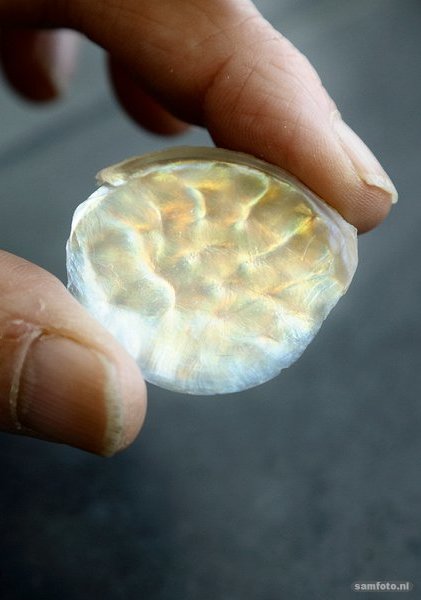From green slime to aircraft interior
Slimy green stuff. That is a pretty accurate description of the product that is left over after sewage water has been purified using the Nereda method, the aerobic granular sludge technology developed at TU Delft.
It costs a lot of money to dispose of and process this type of waste, even though the biopolymers from this stuff have a lot of potential. The long chains of sugars and proteins bond well to nanoclay and graphene oxide. This means that you can make lightweight materials that are both very stiff and virtually non-flammable. The products also look beautiful, like mother of pearl.
And this is where money can be made, according to professor of biotechnology Mark van Loosdrecht, the spiritual father of the Nereda technology, and professor of polymeric materials Stephen Picken (both at the Faculty of Applied Sciences). They recently started a spin-off company: Slimy Green Stuff. That name raised more than a few eyebrows. “You don’t forget a name like that,” says Picken. “What else should we have called it, Delft Polymeren BV? That’s boring.”
“You can use the material to make parts for the interior of aircraft,” says Van Loosdrecht. “Or crab sticks,” adds Picken. “The polymers look like alginate, but we’re not going to use them to make food.”
At the end of last year, the researchers signed a cooperation agreement with Royal HaskoningDHV, which is involved in the construction of numerous Nereda installations all over the world. In the coming years, the company will fund four PhD candidates who will focus on developing more efficient methods for recovering polymers from waste and converting them into promising materials.
